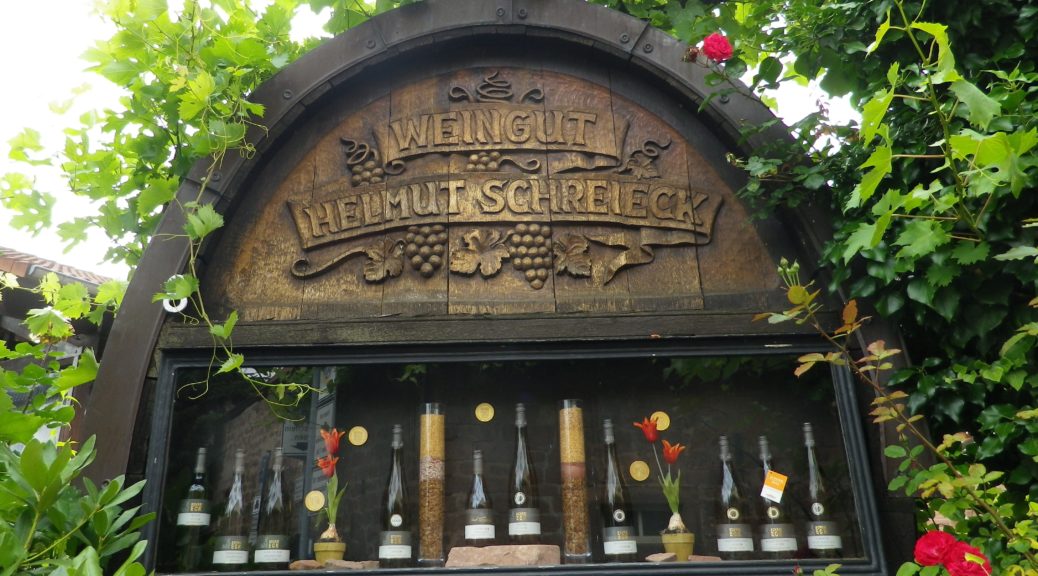What I Learned
Red sandstone is one of the most striking features of the Suedliche Weinstrasse wine district. It shows up in the scenic rock formations, in the stonework of the local castles (of which there are many), and in the vineyards. This sedimentary rock gains its color from the iron oxide present in the original deposits. As a soil base for vines, it is rather good at retaining the sun’s heat. On the debit side, it is rather poor in nutrients.
Riesling has always played an important role, especially in the northern part of this region. Mueller Thurgau is also an important white varietal, but more so in the south. Weissburgunder, Pinot Blanc, is another white wine grape that is planted here, although in far smaller quantities. As for the red varietals, there is Dornfelder, the most widely cultivated red wine grape locally. As a percentage of red wine grapes grown, it has overtaken the traditional favorite: Portugieser. Spaetburgunder, aka Pinot Noir, represents a full 7% of the grapes planted, and is gaining in popularity.
What I Tasted
2015 Riesling, Trocken, Qualitaetswein, Weingut Altes Schloesschen (Saint Martin): A dry white wine with light gold color; peach nose, peach and sweet herb flavors; mild acidity, well-balanced overall.
2012 Auxerrois, Feinherb, Kabinett, Weingut Nicole Graeber, (Edenkoben): An off-dry white wine, very smooth with mild acidity; fuller bodied than many local German white wines; nice fruity bouquet, followed by citrus flavors; a nice depth of flavor overall.
2011 Cuvee Abendrot, Weingut Kloster Heilsbruck, (Edenkoben): A dry red wine with medium ruby red color; a very pleasant blend of local reds, drier and fuller bodied than most German red wines. Hints of red berries and a bit of spice. As the name suggests, this red is a pleasant sipping wine for evenings.
2011 Dornfelder, Edenkobener Schloss Ludwigshoehe; Trocken, Qualitaetswein, Weingut Teutsch: A dry red wine with dark garnet color; spice, darkly toasted wood nose, with prune flavors; medium plus tannins.
